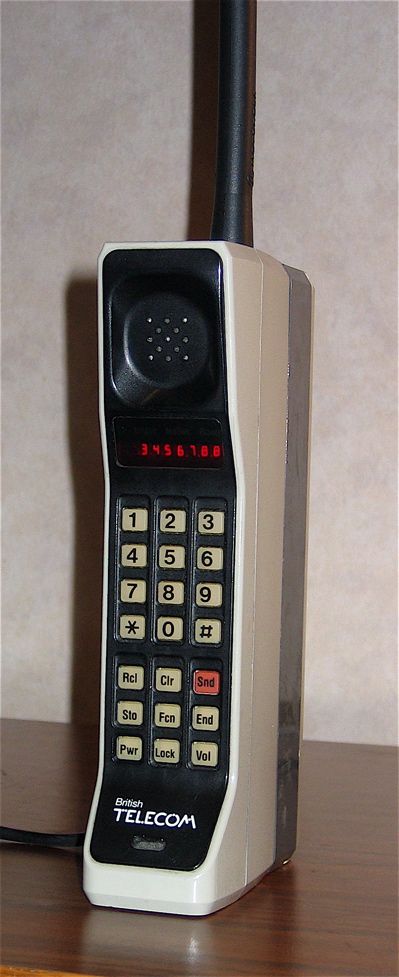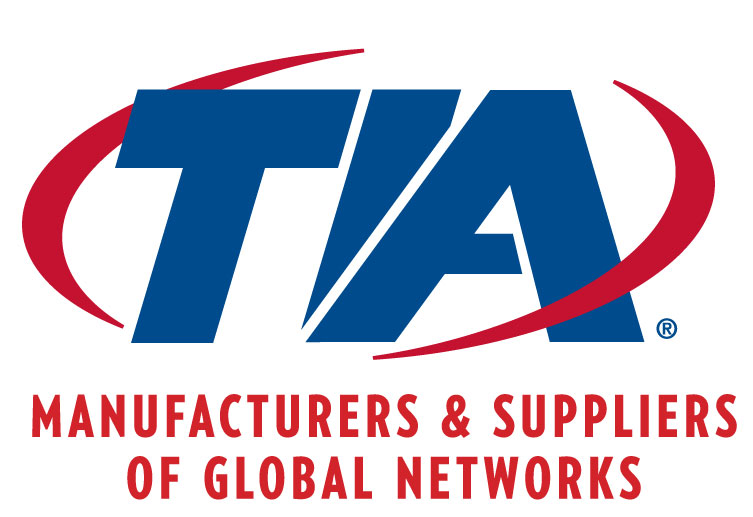|
Electronic Serial Number
Electronic serial numbers (ESNs) were created by the U.S. Federal Communications Commission (FCC) to uniquely identify mobile devices, from the days of Advanced Mobile Phone System, AMPS in the United States starting in the early 1980s. The administrative role was taken over by the Telecommunications Industry Association in 1997 and is still maintained by them. ESNs are currently mainly used with CDMA phones (and were previously used by Advanced Mobile Phone System, AMPS and digital AMPS, TDMA phones), compared to International Mobile Equipment Identity (IMEI) numbers used by all GSM phones. The first eight bits of the ESN were originally the manufacturer code, leaving 24 bits for the manufacturer to assign up to 16,777,215 codes to mobiles. To allow more than 256 manufacturers to be identified, the manufacturer code was extended to 14 bits, leaving 18 bits for the manufacturer to assign up to 262,144 codes. Manufacturer code 0x80 is reserved from assignment and is used instead as a ... [...More Info...] [...Related Items...] OR: [Wikipedia] [Google] [Baidu] |
Federal Communications Commission
The Federal Communications Commission (FCC) is an independent agency of the United States government that regulates communications by radio, television, wire, internet, wi-fi, satellite, and cable across the United States. The FCC maintains jurisdiction over the areas of broadband access, fair competition, radio frequency use, media responsibility, public safety, and homeland security. The FCC was established pursuant to the Communications Act of 1934 to replace the radio regulation functions of the previous Federal Radio Commission. The FCC took over wire communication regulation from the Interstate Commerce Commission. The FCC's mandated jurisdiction covers the 50 states, the District of Columbia, and the territories of the United States. The FCC also provides varied degrees of cooperation, oversight, and leadership for similar communications bodies in other countries in North America. The FCC is funded entirely by regulatory fees. It has an estimated fiscal-2022 budg ... [...More Info...] [...Related Items...] OR: [Wikipedia] [Google] [Baidu] |
Mobile Devices
A mobile device or handheld device is a computer small enough to hold and operate in hand. Mobile devices are typically battery-powered and possess a flat-panel display and one or more built-in input devices, such as a touchscreen or keypad. Modern mobile devices often emphasize wireless networking, to both the Internet and to other devices in their vicinity, such as headsets or in-car entertainment systems, via Wi-Fi, Bluetooth, cellular networks, or near-field communication. Characteristics Device mobility can be viewed in the context of several qualities: * Physical dimensions and weight * Whether the device is mobile or some kind of host to which it is attached is mobile * What kind of host devices it can be bound with * How devices communicate with a host * When mobility occurs Strictly speaking, many so-called mobile devices are not mobile. It is the host that is mobile, i.e., a mobile human host carries a non-mobile smartphone device. An example of a true mobile computing ... [...More Info...] [...Related Items...] OR: [Wikipedia] [Google] [Baidu] |
Advanced Mobile Phone System
Advanced Mobile Phone System (AMPS) was an analog mobile phone system standard originally developed by Bell Labs and later modified in a cooperative effort between Bell Labs and Motorola. It was officially introduced in the Americas on October 13, 1983,Private Line and was deployed in many other countries too, including Israel in 1986, Australia in 1987, Singapore in 1988, and Pakistan in 1990. It was the primary analog mobile phone system in North America (and other locales) through the 1980s and into the 2000s. As of February 18, 2008, carriers in the United States were no longer required to support AMPS and companies ... [...More Info...] [...Related Items...] OR: [Wikipedia] [Google] [Baidu] |
Telecommunications Industry Association
The Telecommunications Industry Association (TIA) is accredited by the American National Standards Institute (ANSI) to develop voluntary, consensus-based industry standards for a wide variety of information and communication technology (Information and communication technologies, ICT) products, and currently represents nearly 400 companies. TIA's Standards and Technology Department operates twelve engineering committees, which develop guidelines for private radio equipment, cellular towers, data terminals, satellites, telephone terminal equipment, accessibility, VoIP devices, structured cabling, data centers, mobile device communications, multimedia multicast, vehicular telematics, healthcare ICT, Machine to machine, machine to machine communications, and smart grid, smart utility networks. Active participants include communications equipment manufacturers, service providers, government agencies, academic institutions, and end-users are engaged in TIA's standards setting proces ... [...More Info...] [...Related Items...] OR: [Wikipedia] [Google] [Baidu] |
CDMA
Code-division multiple access (CDMA) is a channel access method used by various radio communication technologies. CDMA is an example of multiple access, where several transmitters can send information simultaneously over a single communication channel. This allows several users to share a band of frequencies (see bandwidth). To permit this without undue interference between the users, CDMA employs spread spectrum technology and a special coding scheme (where each transmitter is assigned a code). CDMA optimizes the use of available bandwidth as it transmits over the entire frequency range and does not limit the user's frequency range. It is used as the access method in many mobile phone standards. IS-95, also called "cdmaOne", and its 3G evolution CDMA2000, are often simply referred to as "CDMA", but UMTS, the 3G standard used by GSM carriers, also uses "wideband CDMA", or W-CDMA, as well as TD-CDMA and TD-SCDMA, as its radio technologies. Many carriers (such as AT&T, U ... [...More Info...] [...Related Items...] OR: [Wikipedia] [Google] [Baidu] |
Digital AMPS
Digital AMPS (D-AMPS), most often referred to as TDMA, is a second-generation ( 2G) cellular phone system that was once prevalent throughout the Americas, particularly in the United States and Canada since the first commercial network was deployed in 1993. Former large D-AMPS networks included those of AT&T and Rogers Wireless. The name TDMA is based on the abbreviation for time-division multiple access, a common multiple access technique which is used in most 2G standards, including GSM. D-AMPS competed against GSM and systems based on code-division multiple access (CDMA). It is now considered end-of-life, as existing networks have shut and been replaced by GSM/GPRS or CDMA2000 technologies. The last carrier to operate a D-AMPS network was U.S. Cellular, who terminated it on February 10, 2009. The technical names for D-AMPS are IS-54 and its successor IS-136. IS-54 was the first mobile communication system which had provision for security, and the first to employ time-divisio ... [...More Info...] [...Related Items...] OR: [Wikipedia] [Google] [Baidu] |
International Mobile Equipment Identity
The International Mobile Equipment Identity (IMEI) is a numeric identifier, usually unique, for 3GPP and iDEN mobile phones, as well as some satellite phones. It is usually found printed inside the battery compartment of the phone but can also be displayed on-screen on most phones by entering the MMI Supplementary Service code *#06# on the dialpad, or alongside other system information in the settings menu on smartphone operating systems. GSM networks use the IMEI number to identify valid devices, and can stop a stolen phone from accessing the network. For example, if a mobile phone is stolen, the owner can have their network provider use the IMEI number to blocklist the phone. This renders the phone useless on that network and sometimes other networks, even if the thief changes the phone's SIM card. Devices without a SIM card slot or eSIM capability usually do not have an IMEI, except for certain early Sprint LTE devices such as the Samsung Galaxy Nexus and S III which e ... [...More Info...] [...Related Items...] OR: [Wikipedia] [Google] [Baidu] |
Sha-1
In cryptography, SHA-1 (Secure Hash Algorithm 1) is a hash function which takes an input and produces a 160-bit (20-byte) hash value known as a message digest – typically rendered as 40 hexadecimal digits. It was designed by the United States National Security Agency, and is a U.S. Federal Information Processing Standard. The algorithm has been cryptographically broken but is still widely used. Since 2005, SHA-1 has not been considered secure against well-funded opponents; as of 2010 many organizations have recommended its replacement. NIST formally deprecated use of SHA-1 in 2011 and disallowed its use for digital signatures in 2013, and declared that it should be phased out by 2030. , chosen-prefix attacks against SHA-1 are practical. As such, it is recommended to remove SHA-1 from products as soon as possible and instead use SHA-2 or SHA-3. Replacing SHA-1 is urgent where it is used for digital signatures. All major web browser vendors ceased acceptance of SHA-1 SSL certifi ... [...More Info...] [...Related Items...] OR: [Wikipedia] [Google] [Baidu] |
Mobile Equipment Identifier
A mobile equipment identifier (MEID) is a globally unique number identifying a physical piece of CDMA2000 mobile station equipment. The number format is defined by th3GPP2 report S.R0048but in practical terms, it can be seen as an IMEI but with hexadecimal digits. An MEID is 56 bits long (14 hexadecimal digits). It consists of three fields, including an 8-bit regional code (RR), a 24-bit manufacturer code, and a 24-bit manufacturer-assigned serial number. The check digit (CD) is not considered part of the MEID. The MEID was created to replace electronic serial numbers (ESNs), whose virgin form was exhausted in November 2008. As of TIA/EIA/IS-41 Revision D and TIA/EIA/IS-2000 Rev C, the ESN is still a required field in many messages—for compatibility, devices with an MEID can use a pseudo-ESN (pESN), which is a manufacturer code of 0x80 (formerly reserved) followed by the least significant 24 bits of the SHA-1 hash of the MEID. MEIDs are used on CDMA mobile phones. GSM phones ... [...More Info...] [...Related Items...] OR: [Wikipedia] [Google] [Baidu] |
3GPP2
The 3rd Generation Partnership Project 2 (3GPP2) was a collaboration between telecommunications associations to make a globally applicable third generation (3G) mobile phone system specification within the scope of the ITU's IMT-2000 project. In practice, 3GPP2 was the standardization group for CDMA2000, the set of 3G standards based on the earlier cdmaOne 2G CDMA technology. The participating associations were ARIB/TTC (Japan), China Communications Standards Association, Telecommunications Industry Association (North America) anTelecommunications Technology Association(South Korea). The agreement was established in December 1998. Ultra Mobile Broadband (UMB) was a 3GPP2 project to develop a fourth-generation successor to CDMA2000. In November 2008, Qualcomm, UMB's lead sponsor, announced it was ending development of the technology, favoring LTE instead. 3GPP2 should not be confused with 3GPP; 3GPP is the standard body behind the Universal Mobile Telecommunications ... [...More Info...] [...Related Items...] OR: [Wikipedia] [Google] [Baidu] |
CDMA2000
CDMA2000 (also known as C2K or IMT Multi‑Carrier (IMT‑MC)) is a family of 3G mobile technology standards for sending voice, data, and signaling data between mobile phones and cell sites. It is developed by 3GPP2 as a backwards-compatible successor to second-generation cdmaOne (IS-95) set of standards and used especially in North America and South Korea. CDMA2000 compares to UMTS, a competing set of 3G standards, which is developed by 3GPP and used in Europe, Japan, China, and Singapore. The name CDMA2000 denotes a family of standards that represent the successive, evolutionary stages of the underlying technology. These are: *Voice: CDMA2000 1xRTT, 1X Advanced *Data: CDMA2000 1xEV-DO ( Evolution-Data Optimized): Release 0, Revision A, Revision B, Ultra Mobile Broadband (UMB) All are approved radio interfaces for the ITU's IMT-2000. In the United States, ''CDMA2000'' is a registered trademark of the Telecommunications Industry Association (TIA-USA). 1X CDMA200 ... [...More Info...] [...Related Items...] OR: [Wikipedia] [Google] [Baidu] |





